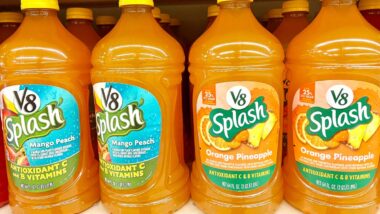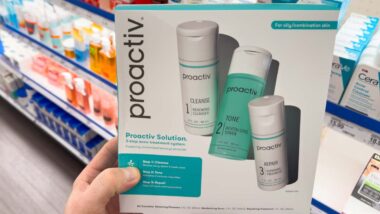Top Class Actions’s website and social media posts use affiliate links. If you make a purchase using such links, we may receive a commission, but it will not result in any additional charges to you. Please review our Affiliate Link Disclosure for more information.
Sodium Hydroxide Overview
According to Chemical Safety Facts, sodium hydroxide and hydrogen are two byproducts of the chlorine production process. Chlorine, which is used for its disinfecting nature and as an ingredient in many products with public health application, is made from one of the earth’s most plentiful substances—salt.
As indicated by a Thought Co. article, sodium hydroxide is a chemical substance that is hygroscopic and also corrosive in nature. Hygroscopic refers to its ability to absorb water from the environment.
Its ability to destroy another substance on contact such as burn the skin of those that work with it unprotected is what is meant by being corrosive. It has also been used in public works to destroy roadkill on contact.
Another word for corrosive is “caustic.” Sodium hydroxide is also known as caustic soda or lye. There are pure and impure varieties of caustic soda which determine how they are used. In a separate Thought Co. article, uses for pure varieties are making soap or candles.
A common use for an impure version is in the making of drain cleaner. In addition to the above uses, other ways in which this chemical is applied is in the manufacturing of paper, making pharmaceutical drugs, treating water for municipal use or to “soften” its mineral content, aluminum production, and refining cooking oils.
It is also not well known that lye is used in the making of illegal drugs such as methamphetamine. This is one of the key reasons it is difficult to purchase in large quantities.
As indicated by the Recovery Village, the passage of the Comprehensive Methamphetamine Control Act of 1966 was a key player in putting this substance out of reach in terms of bulk purchase. This legislation put companies which sold sodium hydroxide or lye under strict regulations.
Steep fines began to be associated with any company selling bulk amounts for the purposes of drug production. The reverse was also true. Any consumer attempting to buy a large amount was subject to having to provide evidential proof of no ill-intent with respect to illegal drugs.
If your business relies upon the use of caustic soda for manufacturing or production, you may have noticed a sharp rise in prices which have allegedly doubled over the last three to four years. A recent lawsuit has proposed that cost increases were artificially stimulated by sodium hydroxide producers temporarily stopping the manufacturing of this key element.
The shut-down may have forced a supply shortage which ordinarily would not have occurred. Caustic soda producers have been accused in this lawsuit of conspiring together to affect the market.
They may have been in violation of U.S. antitrust laws and used trade meetings as avenues by which to set up the price-fixing plan. A suggestion has been made that one such avenue was the American Fuel and Petrochemical Manufacturers (AFPM) annual meeting.
If your business has suffering financial loss due to this price hike of caustic soda, you might have a legal claim and be eligible to participate in an active class action lawsuit.















